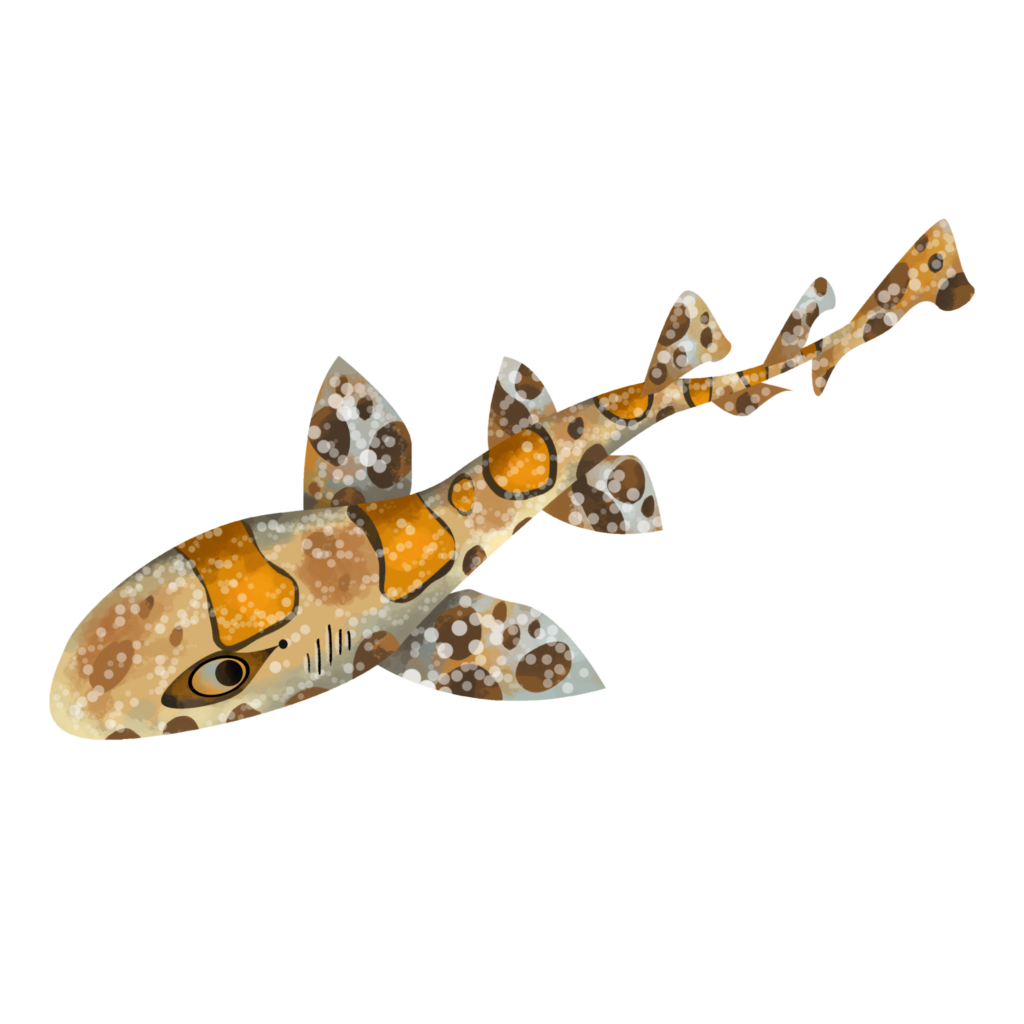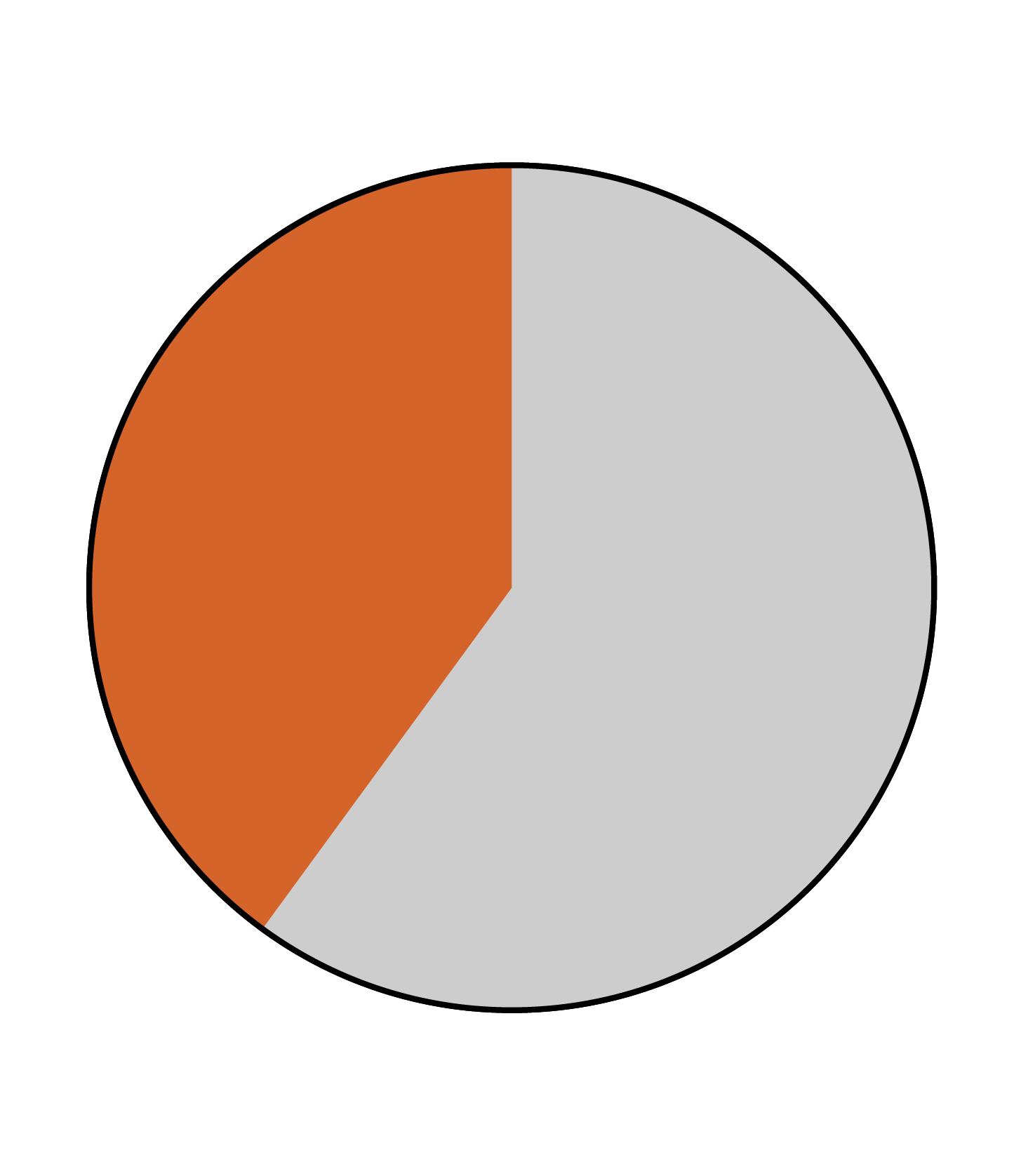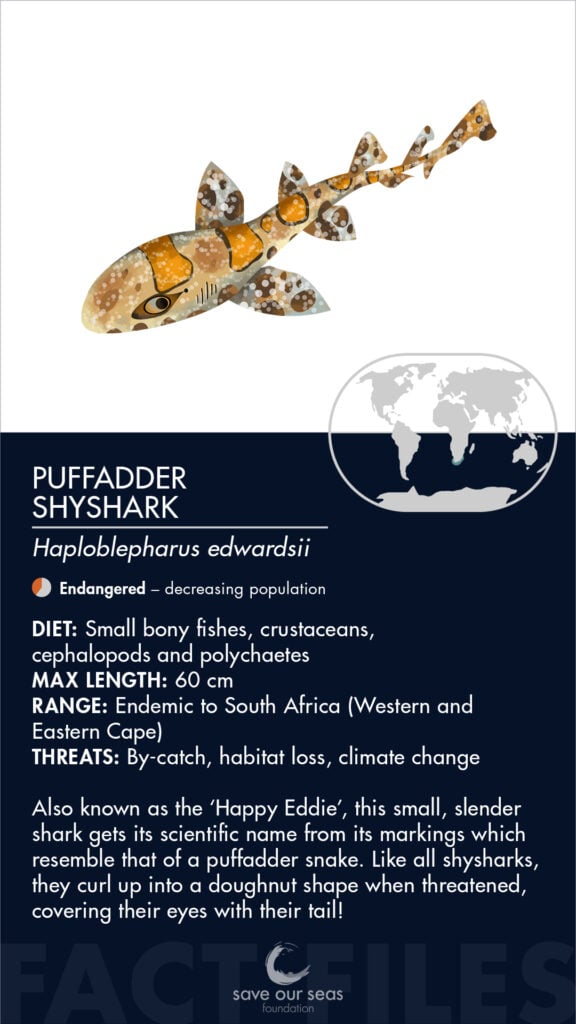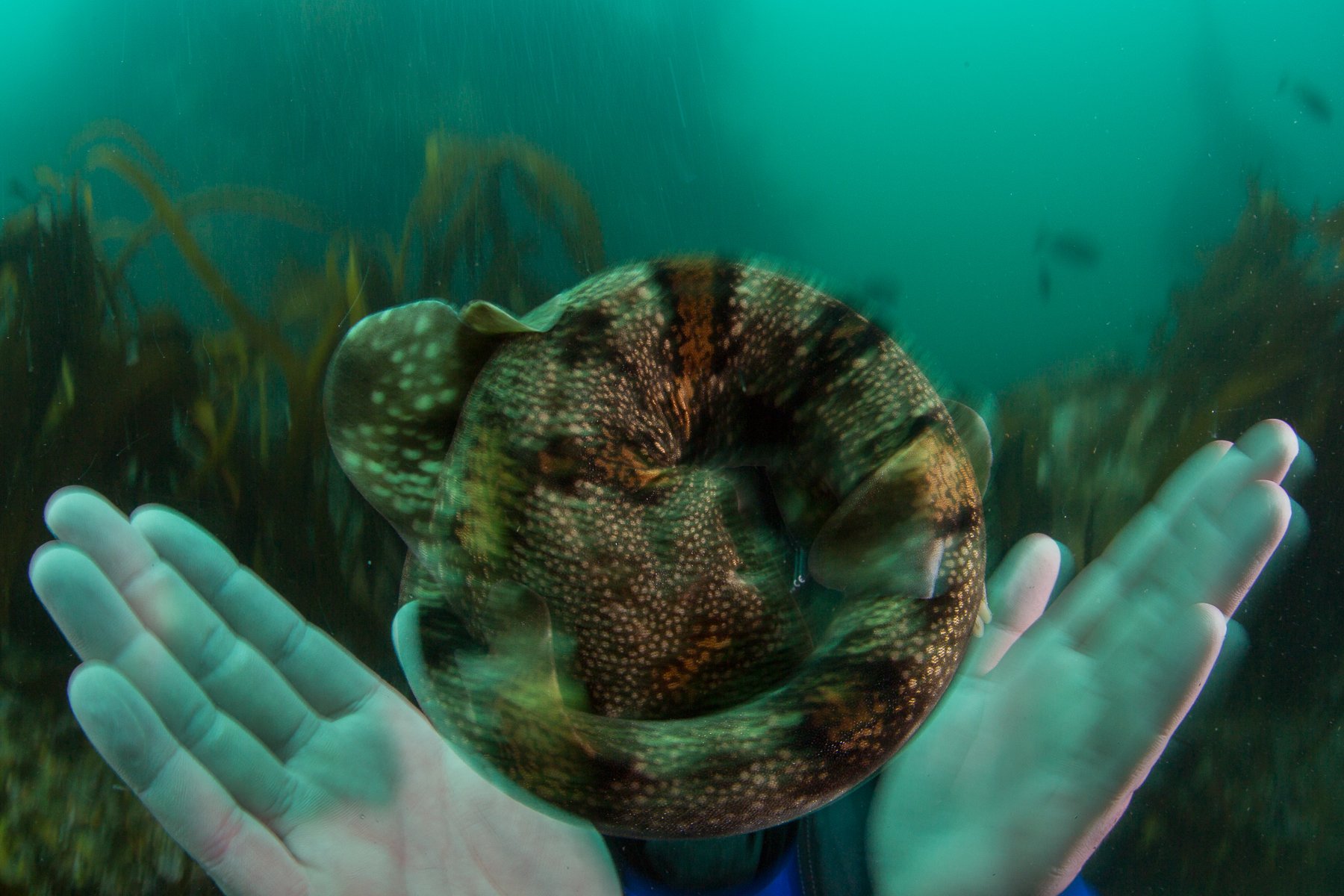Puffadder shyshark
Haploblepharus edwardsii



This bottom-dwelling shark species can only be found off the coast of South Africa, from Langebaan Lagoon in the Western Cape to Algoa bay in the East. Their unusual markings – golden brown with reddish-brown saddles – resemble that of their namesake, the puffadder snake, an aggressive species also found in South Africa. But unlike their reptilian counterpart, the puffadder shyshark is pretty non-confrontational; they curl up into a doughnut when threatened!

Identification
Slender body, mostly golden brown in colour with small white spots, and reddish-brown or orange saddles. White underside. Flattened head with ‘cat-like’ eyes and a narrow, rounded snout.
Special behaviour
When threatened, the puffadder shyshark curves its body into a circle, or doughnut shape, using its tail to cover its eyes. Not only does this protect the most delicate sensory organs, but it also makes the shark harder to eat. Puffadder shysharks also like company, and it is not unusual to see several of them hiding out together in a gap between the rocks.
Reproduction
Puffadder shysharks lay eggs, meaning they are oviparous. The female will typically lay her eggs in pairs. The egg cases are very small, at around 3.5 to 5 cm long.
Habitat and geographical range
Puffadder shysharks can be found on rocky reefs, sandy substrates and in kelp forests. They are endemic to South Africa, occurring only in the Southeast Atlantic and Southwest Indian Oceans from the Western to Eastern Cape. Their depth preference is thought to depend on their location; in the west, they are mostly found from 0 to 30 metres in kelp forests and on rocky reefs, but in the east, they seem to prefer deeper and sandy habitats.

Diet description
Puffadder shysharks have a varied diet, including crustaceans, cephalopods, polychaetes and small bony fishes.
Threats
Happy Eddies are regularly caught as bycatch in beach seine, gillnet, trawl, rock lobster and longline fisheries. They are also threatened by habitat loss and degradation, and may be sensitive to climate change as the hatching of their eggs is temperature dependent.
Relationship with humans
Due to its small size, the puffadder shyshark is no danger to humans. However, it is considered a ‘pest’ by recreational and rock lobster fishers, who believe the puffadder shyshark steals their bait. They are persecuted because of this.
Conservation
There are no species-specific measures for the puffadder shyshark, but trawling efforts in South Africa have decreased substantially over the past two decades. Further research and monitoring is needed to help better protect the Happy Eddie.
Fun Facts
Male and female puffadder shysharks prefer different food types. Males have a penchant for polychaete worms, where females tend to go for crustaceans. They even have different tooth shapes to accommodate this – males have three-pointed teeth, whereas females have five-pointed!
George Edwards was the first to describe and illustrate the puffadder shyshark, while on a trip to the Cape of Good Hope in 1760. However, he didn’t name the shark after himself – that came later, in 1822, when Swiss naturalist Heinrich Rudolf Schinz declared the shark H. edwardsii in honour of George.
The nickname Happy Eddie isn’t because of their jovial nature – it’s a play on their latin name, Haploblepharus edwardsii.
Puffadder shysharks share their genus, Haploblepharus, with three other species – the natal shyshark, dark shyshark and brown shyshark. All are endemic to South Africa, with the exception of the dark shyshark which is found off Namibia. Each one has its own ‘happy’ nickname: brown shysharks are ‘Plain Happy’, dark shysharks are ‘Pretty Happy’, and the natal shyshark is ‘Happy Chappie’!
Puffadder shysharks can glow in the dark! They have the ability to emit their own light, known as biofluorescence, which we can only see with the help of a special light.






